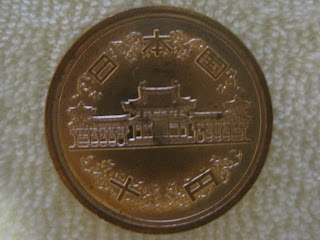The country is known for many things; It's culture is one of the oldest in the world, the Buddhist temples and shrines, the tenth largest population with over 128 million and of course, karaoke.
Back in the states, I enjoy patronizing the Full House Lounge (I can be found there at least once a month on Thursdays or Fridays) in Benson. Although I botch pretty much every song I sing, I really enjoy the thought of performing someone else's song to a group that may or may not want to hear the particular tune chosen. Now, as you would imagine, there are some differences between karaoke here in Japan and karaoke back home (beyond trading the Wild Turkey for sake).
After last night, I am glad to say that I have experienced karaoke both in Kyoto and Tokyo. In both areas, a small room is rented hourly and typically with a one drink minimum per person. The beers and cocktails are around 500 yen (one yen is roughly equal to one penny) as is the room per hour. Due to the size of the rooms, I recommend not setting down your beer as there tends to be a domino effect when (not if, but when) a beer gets knocked over. In Kyoto, we were lucky enough to have our friend Akira (chef and owner of kitchen Rakuraku
 which a few of us attended almost every night) show us the ropes. After getting a hang of the the wireless machine which just uses kanji (japanese symbols), to dial in the numbers of our selected jams, we were ready to rock.
which a few of us attended almost every night) show us the ropes. After getting a hang of the the wireless machine which just uses kanji (japanese symbols), to dial in the numbers of our selected jams, we were ready to rock.The videos behind the words on the screen show the most awkward of moving images, from a very distraught man who gets out of his convertible to smoke a cigarette as traffic screams by on a busy street, to the most ridiculous computer animation of some sort of spaceship cruising between sky scrapers in a futuristic cityscape with a grip of missiles chasing closely behind. There is also this reoccurring video of some buff white guy being admired by a woman as he's leaning on a gas pump filling up his ride.
As you can tell from the photos, one is much more susceptible to seizures while singing in Tokyo rather than the laid back Kyoto room. As the lights flashed quickly above my head and the glowing lights changed the skin tone of people's faces from blue to pink, I looked at myself in a rounded mirror and realized that while in this room, we are all rock stars.
I'm not saying saying that I prefer karaoke in Japan, but the Full House Lounge may need to step it's game up.
P.S. I didn't post any videos that I shot, because people also shot video of me... I would be shooting myself in the foot if I posted, but if anyone back home wants some blackmail videos, contact me at j.addison0@gmail.com. Keep in mind, these videos don't come cheap.











 Byodoin Temple was first established in 1052 when the Fujiwara clan converted their family villa into a temple. It was during the mid-Heian Period and is now one of the last surviving pieces of architecture of that time. The pure land garden with the Ajike Pond is also a great example of Heian design. The main building is called Phoenix Hall because of the two phoenixes flanking the center roof and the structure's resemblance to a phoenix spreading its wings. In the center of Phoenix Hall sits the seated statue of Amitabha Tathagata, made by Jocho, a Buddhist sculptor specializing in the assembled wood technique.
Byodoin Temple was first established in 1052 when the Fujiwara clan converted their family villa into a temple. It was during the mid-Heian Period and is now one of the last surviving pieces of architecture of that time. The pure land garden with the Ajike Pond is also a great example of Heian design. The main building is called Phoenix Hall because of the two phoenixes flanking the center roof and the structure's resemblance to a phoenix spreading its wings. In the center of Phoenix Hall sits the seated statue of Amitabha Tathagata, made by Jocho, a Buddhist sculptor specializing in the assembled wood technique. 
 Byodoin Temple on the 10 yen coin
Byodoin Temple on the 10 yen coin





























